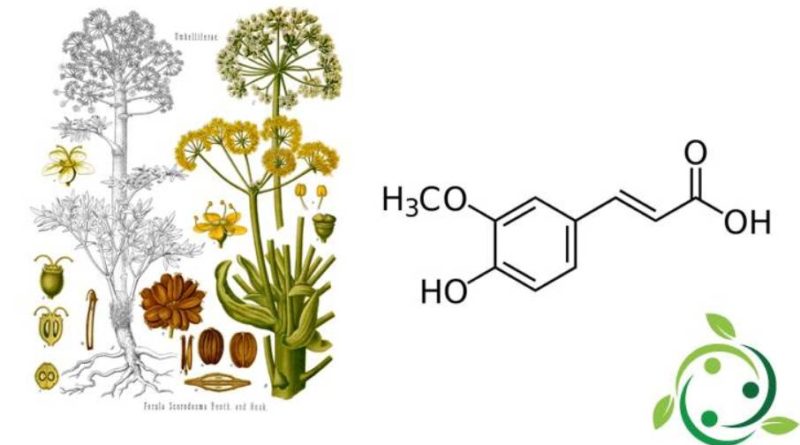Ferulic acid
Ferulic acid
Ferulic acid, whose term in the official IUPAC nomenclature is: 3- (4-hydroxy-3-methoxyphenyl) prop-2E-enoic acid is a carboxylic acid with brute or molecular formula: C10H10O4.
Ferulic acid takes its name from the Ferule which are a genus of perennial herbaceous plants belonging to the Apiaceae family (Umbelliferae) and present in abundance in nature in plants of oats, wheat, rice, and other grasses, as well as in artichokes, in the coffee and in some types of fruit such as apples, oranges and pineapples and other Chinese medicinal herbs such as Angelica sinensis, Cimicifuga heracleifolia, Lignsticum chuangxiong.
Ferulic acid is a derivative of trans-cinnamic acid capable of inhibiting the expression and / or activity of inducible cytotoxic enzymes such as nitric oxide synthase, caspase, oxygenase cycle-2.
For this reason, ferulic acid has been proposed for the treatment of various age-related diseases such as neurodegenerative, cardiovascular, diabetes and cancer disorders. However, the abundant in vitro experimental data must be confirmed by clinical trials.
Among the main properties of this compound is therefore highlighted its ability to inhibit the animal enzyme xanthine oxidase, has made it find use in laboratory studies to elucidate various aspects of uric acid metabolism and associated diseases, such as gout . Some researchers would have advanced the (unconfirmed) hypothesis that the consumption of foods containing a high concentration of ferulic acid (such as those mentioned above) could be useful in preventing the appearance of gout in predisposed subjects.
In addition, due to its ability to also interfere with the enzyme 5-lipoxygenase (5-LOX), it was initially used in biochemistry and immunology studies to understand the metabolism of the arachidonic acid branch which leads to the synthesis of leukotrienes. These biological derivatives are powerful mediators of some inflammatory reactions and have an active part in the symptoms of bronchial asthma.
On the basis of this research it has been possible to synthesize much more powerful derivatives that have proven to be truly effective in the control of asthma crises.
Warning: The information shown is not medical advice and may not be accurate. The contents are for illustrative purposes only and do not replace medical advice.

